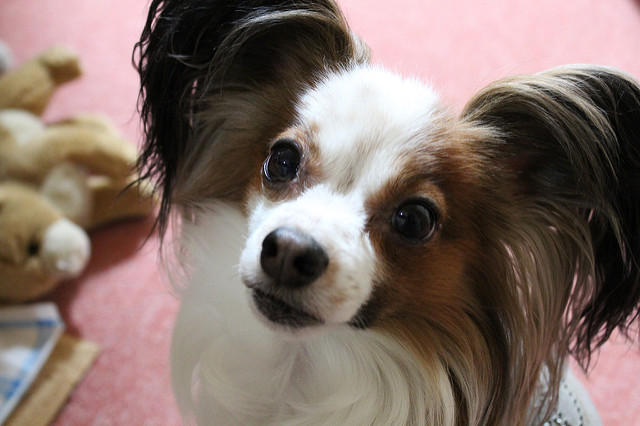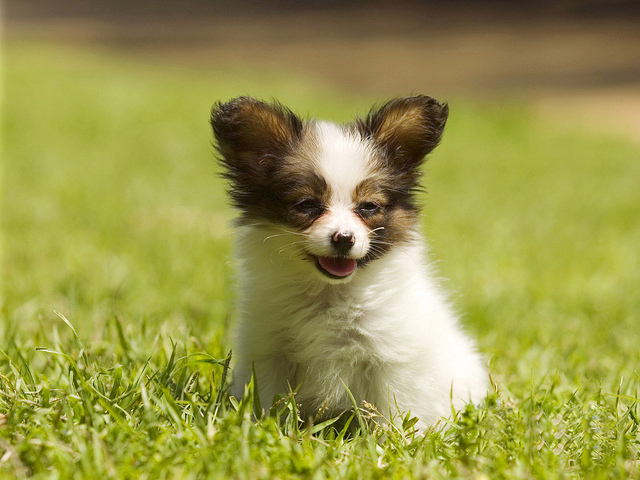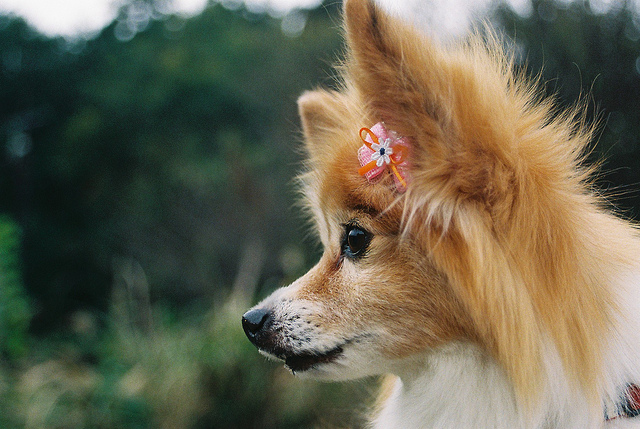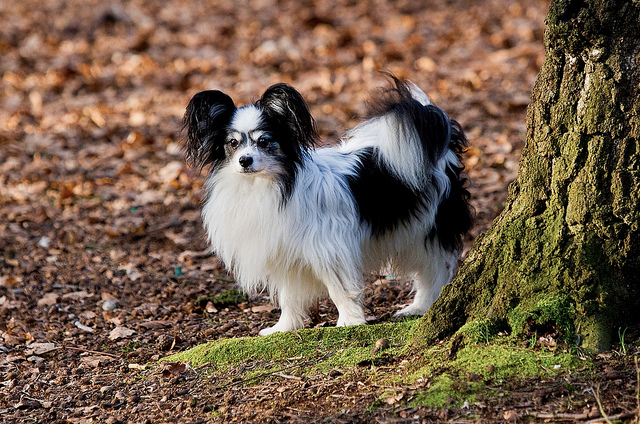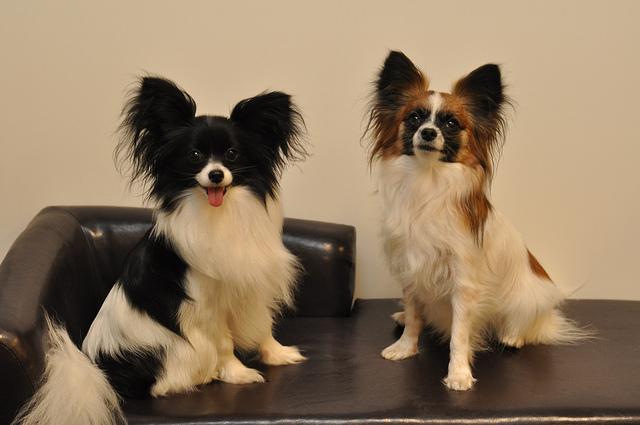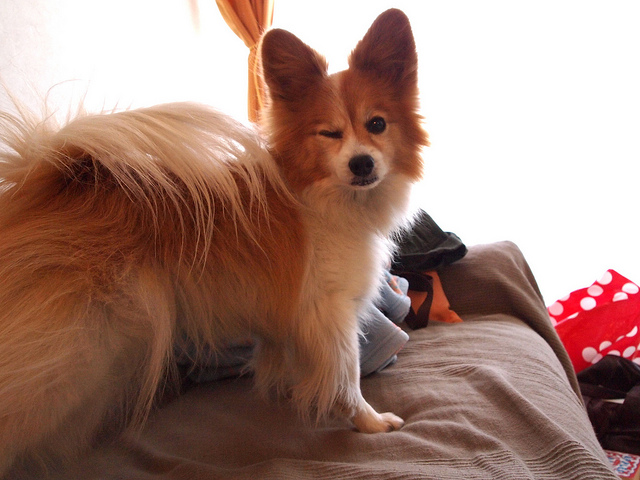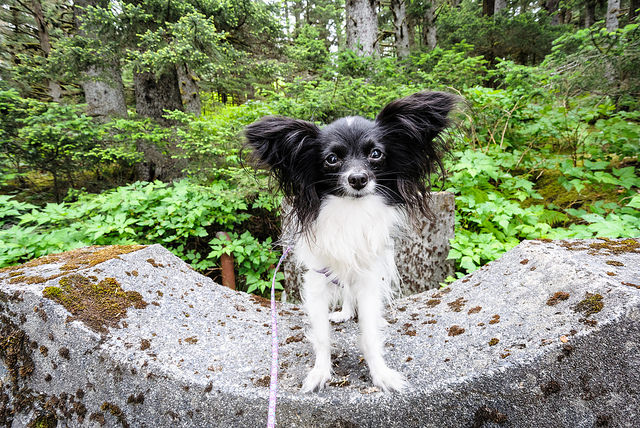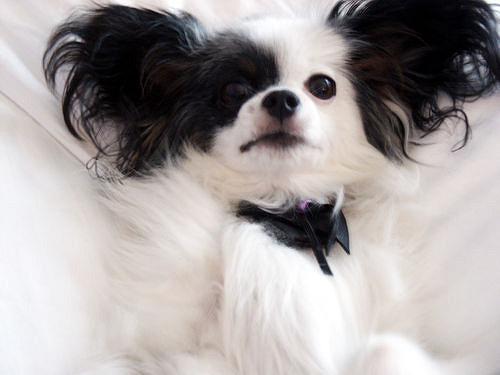Often referred to as the Squirrel Spaniel, the Squirrel Dog, the Epagneul Nain Continental, the Continental Toy Spaniel, the Butterfly Spaniel, and the Dwarf Spaniel, the Papillon is a small, hardy, and graceful dog. Priced throughout Europe for more than 200 years, this lapdog has a lot more to offer than its delicate appearance may suggest. This breed does well in hot climates and in cold weather, and they enjoy being in both urban and rural environments. Known for their happy disposition, small size, and unique appearance, these dogs are a part of the AKC’s Toy Group. Here’s a closer look at Papillons, their history, appearance, grooming needs, and more helpful information for owners of these adorable dogs.
Origin and History
Most of the origin of the Papillon is considered a mystery. Some individuals think that this breed occurred by breeding small breeds of European spaniels while others think that these dogs are descendants of Asian toy breeds, including the Japanese Chin. No matter the specific origin of these dogs, small spaniels were seen in the 1200s in Europe, and Paillons are the modern versions of these small dogs, often seen in tapestries and paintings in the laps of the day’s noble ladies. Multiple artists have painted these beautiful dogs into their portraits, including Van Dyke, Toya, Boucher, Rembrandt, Titian, and Rubens. Several well known owners of this breed include Marie Antoinette and Madame de Pompadour.
Papillons today may have either dropping ears or erect ears. Within Europe, they are considered as separate varieties. However, North America views these dogs as a single breed with two ear varieties that are acceptable for the breed. Originally, these dogs were solid in color, but today they are predominantly white with patches of various other colors on their coat. In fact, within the show ring, solid colored dogs are disqualified.
Even though the breed was very popular throughout Europe, it was not until 1901 that the breed arrived in England. In 1923, the breed was first accepted by England’s Kennel Club. Later in 1915, the American Kennel Club first recognized the breed and it was later added as a member of the Toy Group for full registration eligibility. However, it took until 193 for this breed to be represented by a breed club of their own within the AKC.
Appearance
Papillons are small, fine-boned spaniels that have an intelligent, alert, and friendly expression. The name is French for the word “butterfly,” which is often a term used to describe the ears of this breed. They can have either drooping or erect ears. Their ears have a long fringe and they also have plumed tails. The Papillon has a tapered, fine muzzle that is significantly thinner than their head, while the eyes are medium sized, alert, and round.
These dogs have a flowing, long, single coat that is silky, fine, and straight. On the backs of their forelegs, Papillons have beautiful feathering, while they have “breeches” on the hind legs and “culottes” on the thighs. Their coat is parti-colored, with dominant white along with patches of any color across the body. Their eyes and ears always have color, and ideally, these dogs will have a nose band and a white blaze that is well defined. Some of the colors besides white include black, red, brown, liver, and silver.
When they become adults, Papillons usually stand from 8 to 11 inches high at the withers. They should be a bit longer than they are high and they generally weigh from 5 to 11 pounds as adults.
Papillon Temperament
Papillons are very spirited, energetic dogs that have a huge personality. They enjoy running around, yet the love to have a nap and soak up plenty of affection as well. Since they learn so quickly, they often perform very well in agility and obedience. This breed is excellent for families, since they love playing with kids but they enjoy relaxing as well. While they are very small, they still have plenty of energy, so they need time to play outdoors as much as possible. These dogs are extremely smart, so they need to have their minds exercised as well. They will enjoy obstacle courses, interactive games, and agility training.
The Papillon is highly trainable and they love to please their owners. Since they are so intelligent, they often pick up new commands in only a single lesson. While they have the potential to be a bit rebellious at times, food works well as a motivational tool. Positive reinforcement is always the best option when training this breed.
Grooming
When it comes to grooming, the Papillon is quite low maintenance, even though their coat appears to be high maintenance. They do not have a strong dog odor, and as long as they are brushed a couple times each week, you only need to bathe them as needed. While their coat usually does not mat, brushing them regularly will keep the coat healthy and shiny by distributing their skin’s natural oils. They may need some trimming from time to time.
It’s essential to check the ears of this breed often for infection, irritation, or wax buildup. They should be cleansed weekly. Since they often end up with dental problems, weekly teeth brushing is essential. Nails should be trimmed on a monthly basis if the Papillon doesn’t naturally wear down their toenails.
Working Roles
While Papillons are primarily lap and companion dogs, they are also known to be excellent ratters. They generally play with adult rats until it grows tired, and then they go on to kill the rats. These small dogs are also great tracking dogs, they stand out in the show ring, and they are excellent therapy and hearing dogs as well.
Health
Generally, the Papillon will live to be between 13 and 16 years of age. While these dogs are generally healthy, there are a few breed concerns that come with Papillons. Some of the health concerns of this breed include:
- Cataracts
- Black hair follicular dysplasia
- Patellar luxation
- Entropion
- Progressive retinal atrophy
- Congenital deafness
- Dental problems
- Allergies
- Intervertebral disk disease
- Seizures

